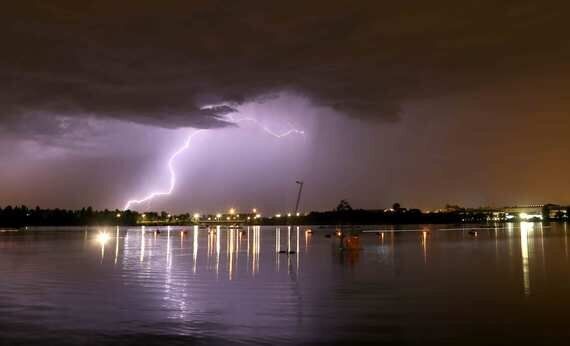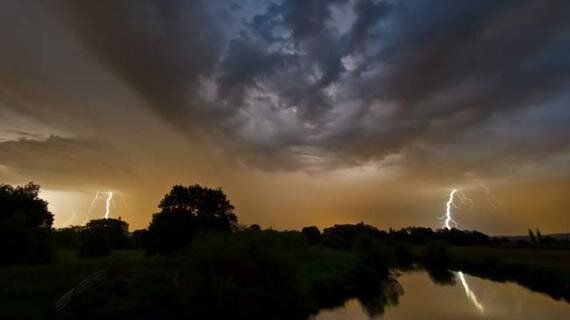Last time we discussed how and where thunderstorms form, this week it's all about lightning strikes, thunder claps and how to work out how far away a storm is.
Let's start with lightning, which is essentially a giant spark that occurs within a cloud, between clouds or between the cloud and the ground. An electric charge builds up within a cloud thanks to the millions of collisions between ice particles and water droplets.
The positive charges form at the top of the cloud and the negative charges at the bottom.
In turn, this causes a positive charge to build up on the ground beneath the cloud, on anything that sticks up such as mountains, people or trees.
When the charge coming up from the ground connects with the charge coming down from the clouds then - flash - we've got a lightning strike.
Return stroke

What we see as an instantaneous flash is actually a complex progression of events. First, a usually invisible discharge of electrons races down from the cloud.
That triggers a discharge of positively charged electricity from the ground that races upwards to meet the descending charge.
When they connect, the lightning channel is completed and a luminous flash of electricity races up from the ground to the cloud in mere milliseconds, called the return stroke. If the lightning flickers there has been more than one return stroke with the lightning flash ending when there are no more electrons left in the channel.
A typical lightning bolt contains 1 billion volts and between 10,000 to 20,000 amperes of current. The average flash would light a 100-watt bulb for 3 months even though it only lasts for 0.2 seconds.
As well as being a high-voltage, high-current surge of electrons, the temperature at the core of a lightning bolt is incredibly hot, hotter than the surface of the Sun! If lightning strikes a sand dune, it can instantly melt the sand into glass.
Thunder only happens when there's lightning

The air in a lightning channel is heated to above 28,000C (50,000F) in only a few millionths of a second, so fast it has no time to expand so it's at very high pressure.
The high pressure air then expands into the surrounding air, compressing it and causing a disturbance that travels in all directions away from the channel. This shock wave then becomes a sound wave, or thunder.
Thunder, named after the Norse god Thor, can seem like it rumbles on and on because each point in the lightning channel produces these shock and sound waves and they travel through layers of the atmosphere at different temperatures.
So you can't get thunder without lightning and while it's noisy, the rumbles won't hurt you. Lightning on the other hand can, though the risk of being struck is far less than that of being killed in a car crash.
Only about 20 per cent of lightning strikes reach the ground, most flashes occur within a storm cloud or between clouds.
1...2...3

And yes, you can work out roughly how far away a storm is by timing how long it is between the flash and the rumble.
This is because the lightning flash travels at the speed of light but thunder travels more slowly at the speed of sound - this varies depending on heat and humidity but a rough figure is 350 metres per second. So sound will travel 1km in roughly 3 seconds and 1 mile in roughly 5 seconds.
If you count ten seconds from the flash of a lightning bolt until the thunder rolls in, the lightning struck about 2 miles or 3km away. Thunder is rarely heard more than 20km away from a storm.
Bolt from the blue
But be warned, if you can hear thunder then you can be struck by lightning even if it's not raining above you.
The phrase 'Bolt from the blue' describes a lightning bolt that appears to have come from blue skies but has actually just travelled out a large distance from a storm cloud before angling down to the ground.
These are rare but have occurred as far as 40km from a storm. In fact, lightning often strikes outside of heavy rain and may occur as far as 10 miles away from any rainfall.
If you feel an electrical charge, for example your hair stands on end or your skin tingles, then best drop to the ground immediately.